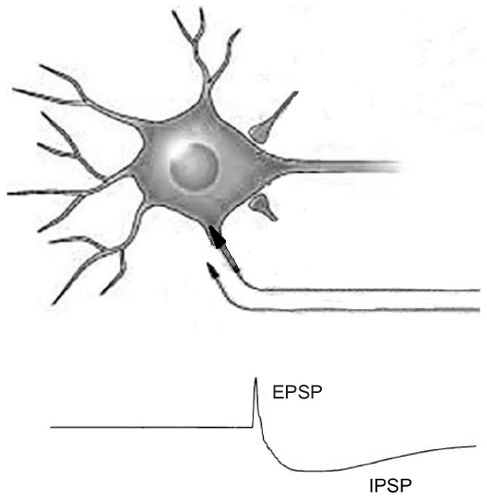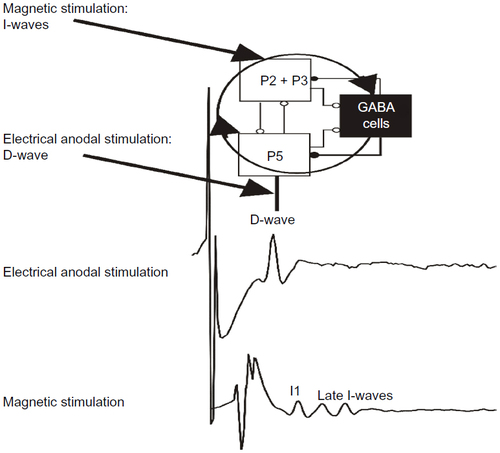Figures & data
Figure 1 EPSP and IPSP postsynaptic potentials.
Notes: Electrical stimulation of the lateral geniculate afferents induces an electrical intracellular activity consisting of a short-lasting depolarizing response (EPSP), followed by a long-lasting hyperpolarizing potential (IPSP).
Abbreviations: EPSP, excitatory postsynaptic potential; IPSP, inhibitory postsynaptic potential.
Abbreviations: EPSP, excitatory postsynaptic potential; IPSP, inhibitory postsynaptic potential.

Figure 2 A schematic view of the model of corticospinal volley generation based on canonical cortical circuit.
Notes: The model includes the superficial excitatory pyramidal neurons of layers II and III (P2–P3), the large pyramidal neurons in layer V (P5), and the inhibitory GABA cells. Electrical stimulation activates the axons of P5 cells evoking a D-wave. Magnetic stimulation evokes the D-wave (produced by a direct activation of the axons of P5 cells) followed by an I1 wave (produced by monosynaptic activation of P5 cells by the axons of P2–P3 cells). At high intensities, magnetic stimulation also produces a recurrent activity in the circuit composed of the layer II and III and layer V pyramidal neurons together with their connections with local GABAergic interneurons (black ellipse and arrows) evoking late I-waves. Adapted from Di Lazzaro V, Ziemann U. The contribution of transcranial magnetic stimulation in the functional evaluation of microcircuits in human motor cortex. Front Neural Circuits. 2013;7:18.Citation34

